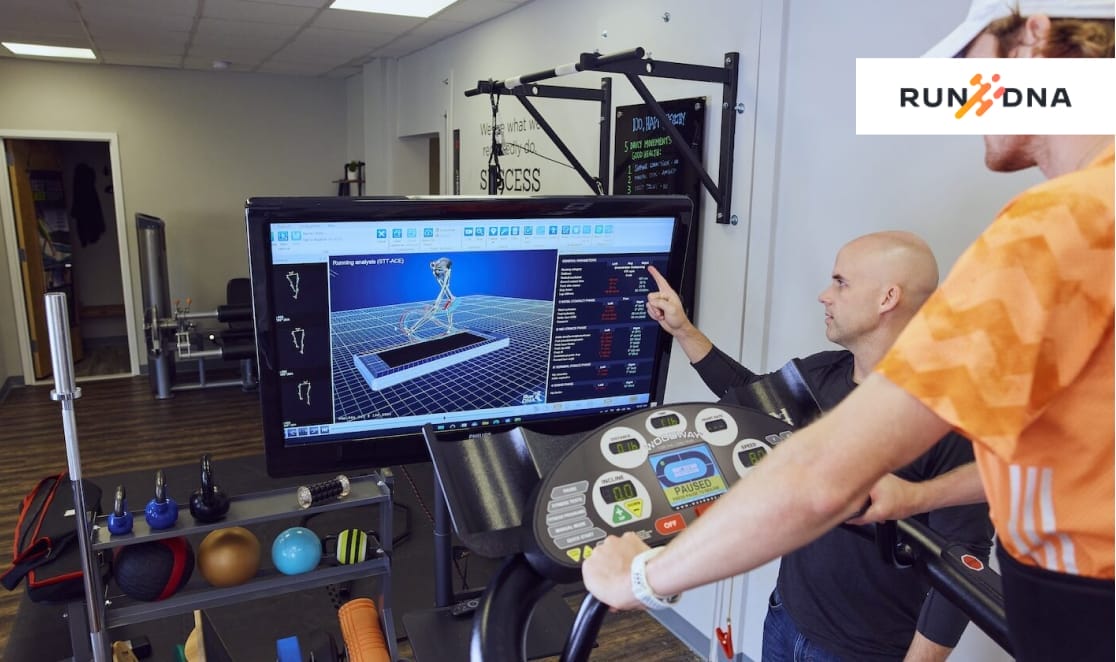Watching someone walk can tell you a lot about their foot health, and podiatrists have turned this simple observation into a powerful diagnostic tool. Walking gait analysis has revolutionized the way podiatrists diagnose and treat everything from common foot pain to complex post-surgical recovery. By carefully studying a patient’s walking pattern, they can uncover issues that might not be visible during a standard physical exam, leading to more accurate diagnoses and targeted treatment plans.

How Podiatrists Use Gait Analysis to Diagnose Foot and Ankle Problems
Walking gait analysis is a powerful diagnostic tool to help podiatrists diagnose and treat foot and ankle problems. From common conditions to post-injury recovery, this tool gives you the answers to your treatment plan.
Common Foot Conditions
Abnormal walking patterns can show up in many foot conditions that may not be visible during a physical exam. Walking gait analysis reveals foot mechanics and structural abnormalities that cause discomfort and chronic pain.
Abnormal gait patterns can show underlying foot conditions that may not be visible. For example, plantar fasciitis, a common cause of heel pain, can cause changes in walking patterns as patients adjust to avoid discomfort. Flat feet and overpronation can be seen during gait analysis. These conditions change the natural mechanics of the foot, causing misalignment and weight distribution, which can lead to further injury or chronic pain.
Structural problems like bunions and hammer toes can cause visible changes in gait. Patients may unconsciously shift their weight to avoid pain and create an uneven walking pattern. Gait analysis allows podiatrists to pick up on these irregularities and give you answers to diagnose and grade the condition. Treatment options like orthotics or footwear adjustments are often recommended to fix these issues.
Ankle and Leg Injuries
Walking gait analysis can provide podiatrists with answers for injuries above the foot, particularly the ankle and lower leg. Walking gait analysis is critical for acute and chronic conditions that affect movement and balance.
In addition to foot conditions, gait analysis is useful in diagnosing injuries to the ankle and lower leg. Achilles tendonitis, for example, can cause a modified gait as patients try to reduce strain on the affected tendon. Ankle instability, another common problem, can manifest as abnormal weight distribution or misalignment of the foot during movement.
Abnormal gait patterns can also cause chronic problems in the legs and knees. Conditions like shin splints or knee pain can develop when gait puts excessive stress on other parts of the body. Podiatrists use gait analysis to pick up on these problems early so we can intervene before they get worse.
Post-surgical or Post-injury Recovery
For patients recovering from foot or ankle surgery, walking gait analysis is an ongoing assessment tool better for earlier stages of recovery, rather than a running gait analysis. It makes sure rehabilitation is progressing smoothly and any gait issues are fixed before they become complications.
It’s also important in monitoring recovery after foot or ankle surgery or injury. Patients often struggle to get back to their normal walking pattern during recovery, which can hinder healing or create new problems. Walking gait analysis allows podiatrists to see the patient’s progress and pick up on any issues that need to be fixed.
A well-designed rehabilitation plan with gait analysis will guide the patient through recovery. Orthotics, targeted exercises, and gait retraining techniques can be customized to get the patient aligned properly and reduce the risk of future injury.

Walking Gait Analysis in a Podiatrist’s Office
Walking gait analysis is a multi-stage process that allows podiatrists to thoroughly and accurately assess foot mechanics and movement patterns. It starts with a basic assessment and progresses to more advanced testing, providing comprehensive data for accurate diagnosis and treatment.
Stages of Gait Analysis
Initial Assessment and Observations
- Visual Assessment: The podiatrist observes the patient’s walk, looking for obvious abnormalities like uneven weight distribution or improper foot positioning.
- Patient History: The podiatrist collects information on past injuries, foot pain, or underlying conditions that may affect the way the patient walks.
- Manual Examination: The podiatrist examines the foot and ankle to check for range of motion, flexibility, and areas of discomfort. This hands-on assessment helps identify issues before further testing.
Gait Analysis Tools
- Pressure Mapping Systems: These systems measure how pressure is distributed across the foot during different phases of walking. The data helps identify issues such as overpronation or high arches by showing which parts of the foot bear the most weight.
- 3D Gait Analysis: Using motion capture technology, 3D gait analysis creates a real-time video of the patient’s movement. It tracks joint angles, limb movement, and foot positioning with high accuracy, giving the podiatrist detailed information to evaluate gait mechanics.

Custom Treatment Plans Based on Gait Analysis
A walking gait analysis system gives podiatrists the data to create custom treatment plans. These plans often include orthotics, shoe modifications, and specific exercises to address the root causes of foot and ankle problems.
Orthotics and Shoe Modifications
Walking gait analysis helps podiatrists determine if orthotics are needed to correct foot misalignments. How weight is distributed while walking allows podiatrists to see imbalances that may be causing pain or discomfort. Custom orthotics are then designed to support, where needed, the realignment of the foot and improvement of walking mechanics.
In addition to orthotics, shoe modifications can prevent further problems. For patients with flat feet, high arches, or other structural issues, wearing the right shoes can reduce stress on the foot and ankle, prevent injuries, and improve mobility. Podiatrists often recommend specific shoes based on gait analysis to ensure proper support and alignment.
Physical Therapy and Exercise Recommendations
In many cases, abnormal gait patterns can be corrected with specific exercises to strengthen the muscles in the foot, ankle, and lower leg. Exercises such as calf raises, foot stretches, and balance training are often prescribed to improve stability and walking mechanics.
Gait retraining is another part of long-term correction. Podiatrists use gait analysis to guide patients through retraining exercises to change their walking patterns. Over time, these exercises correct the abnormal gait, reduce the risk of future injuries, and improve overall mobility so patients can move more comfortably and efficiently.
Maximizing Foot and Ankle Health Through Gait Analysis
Gait analysis is a crucial tool for diagnosing and treating foot and ankle issues. It provides podiatrists with a deep understanding of how a patient moves, helping to identify abnormalities and underlying conditions that may not be obvious during a physical exam. With advanced techniques like pressure mapping and 3D gait analysis, podiatrists can develop tailored treatment plans that include orthotics, footwear adjustments, and exercises.
